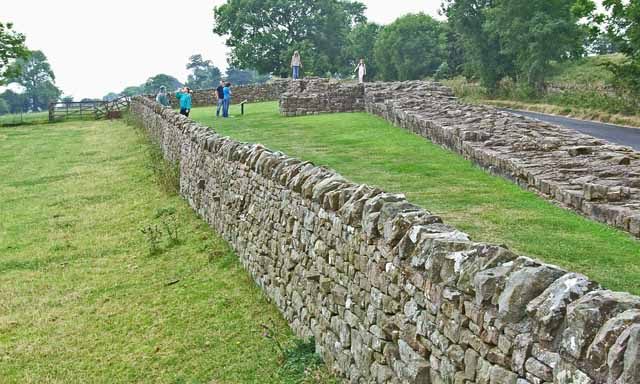
Hadrian’s Wall
Hadrian’s Wall was constructed in the 2nd century and stretched 73 miles coast-to-coast in northern England. It marked one of the borders of the Roman Empire at that time and it took at least six years to build. Parts of it can still be seen today ~ at Birdoswald, for example, which has the longest remaining stretch.
Publius Aelius Hadrianus (76-138AD) was one of the more stable Roman Emperors and his policy was to consolidate the Empire’s territories rather than expand them as his predecessor had done. He was crowned in 117AD and visited Britain 5 years later. It is unclear whether the Wall was already under construction amidst rebellions and raids from the “barbarians” in Scotland, or if it was this visit that prompted Hadrian’s decision to build. A fairly recent discovery of an engraved artefact suggests that the Wall was called ‘Vallum Aelii’ (rampart of Aelius), confirming the connection with Hadrian.
Most of the Wall was of stone but some of it was turf (like the 39-mile ‘Vallum Antonini’ built later on, further north). The remains give only a tiny impression of the enormous structure that it once was, with many forts, gateways and living quarters for soldiers, families and traders.
(Image: Oliver Dixon at geograph.org.uk / CC BY-SA 2.0)
